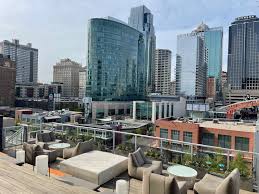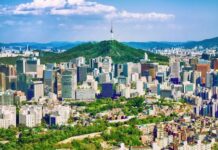As our cities continue to expand, we must figure out how to accommodate this growth without negatively impacting the environment in which we all live. For too long now, the main approach has been what’s called “urban sprawl” – cities just keep on spreading outwards into new suburbs and housing developments as more people move in. But that endless outward expansion is proving to be an environmental disaster in the making.
With sprawl, farms, forests, and other natural areas are gradually being paved over as cities essentially eat up more and more open space. Suburban roads and streets are constructed directly through areas of wildlife, dividing the habitats of various plants and animals. Since everyone must live apart, they must travel great distances for work or school, burning a lot of petrol and releasing greenhouse gases and air pollution. Utilities and other infrastructure get stretched thinner and thinner the farther out the city sprawls. It’s just not a very sustainable approach for the long haul.
The alternative that planners talk about is building “sustainable cities” that can grow while still being way more eco-friendly and compact. Instead of that outward sprawl eating up more land, sustainable cities concentrate new housing and businesses inward at higher densities. They create walkable neighbourhoods with a mix of homes, stores, parks, and public transit so people don’t need to drive as much. Renewable energy, green buildings, smart grids, and recycling are prioritized. The green spaces around the city actually get protected instead of paved over.
Of course, putting these sustainable city ideas into practice isn’t easy – it goes against decades of suburban sprawl being the norm. Just look at what happened in Cape Town a few years ago when the dams almost went bone dry, people had to line up for daily water rations, and a day zero was declared. That kind of doomsday scenario is what can happen with short-sighted sprawling development that overuses natural resources. It was the collective effort of people and government that led to the postponement of Day Zero and ultimately forever.
The incredible thing is, that ancient societies had sustainable practices that were way ahead of their time. Like how the Romans made this concrete that could actually heal its own cracks and repair itself over time. If we could re-discover forgotten technologies like that, it could revolutionize green construction.
Luckily, we’ve also got lots of modern innovations coming up with clever new eco-friendly solutions. You’ve got organizations like LEED and the Indian Green Building Council promoting sustainable design and giving out certifications for green buildings. Scientists even studied how a slime mould distributes nutrients through its branching veins and used that to create better network models for efficient road and rail systems.
One of the extraordinary inventions is what Robert Downey Jr. used for his house out in California. It’s made from pneumoform – basically, the whole structure gets inflated up from a reusable plastic mould, kind of like a big balloon. Since so little construction waste gets produced, it’s a way more sustainable building method. If we could use similar modular techniques on a bigger scale for affordable housing, it could provide a ton of low-cost, eco-friendly homes and help solve issues like homelessness.
Working from home as much as possible is another potential game-changer. If people don’t have to face those gruelling commutes every day, it cuts down on emissions, road congestion, and other environmental stresses. At this point, anything we can do to drive and commute less makes a big difference.
But at the end of the day, for sustainable cities to really take over from suburban sprawl, it’ll take a huge cultural mindset shift across our whole society. People will have to get on board with scaling back expectations for those massive single-family homes on huge lots out in the suburbs. Governments and businesses have to get way more serious about promoting policies, investments and consumer products aligned with true sustainability rather than just endless expansion.
We’re quickly getting to a crisis point where adjusting our urban lifestyles to be less damaging to the environment just has to be the top priority going forward. Fortunately, we’ve now got this toolbox of options ranging from ancient techniques like self-healing concrete to cutting-edge eco-villages using modular inflatable construction. Smart urban planning that emphasizes compact, walkable, transit-friendly development and green spaces can create amazing futuristic cities without that destructive sprawl.
The good news is, getting sustainable cities right is one of the most important things we can do to keep the planet livable for future generations. With some careful long-term planning utilizing the latest green technologies and a real commitment to changing our old unsustainable habits, we can keep growing our cities in a way that preserves and protects the natural environment around us. It’ll take some short-term sacrifices in terms of downsizing expectations for big houses and easy commutes. But the rewards will be cities that are economically prosperous and environmentally healthy for decades to come.
By: Preetika
Write and Win: Participate in Creative writing Contest & International Essay Contest and win fabulous prizes.
















